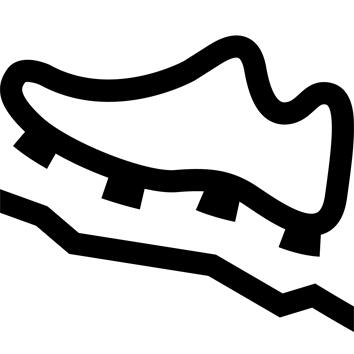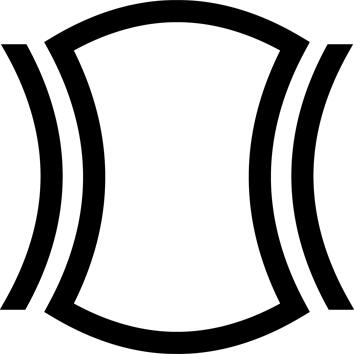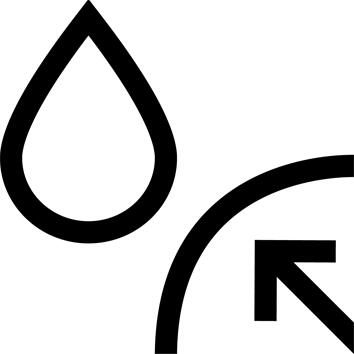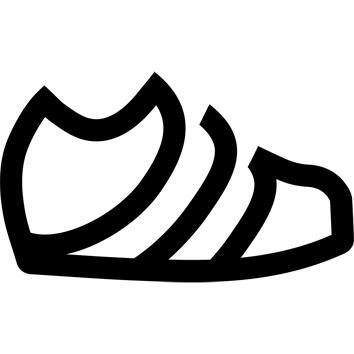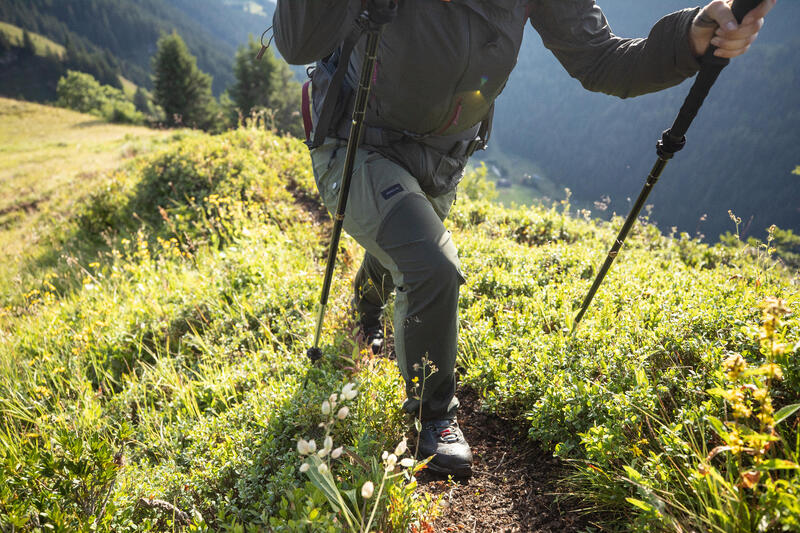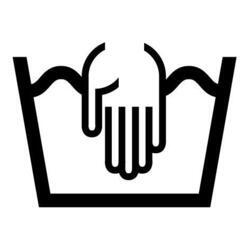Why the same model with two forefoot widths?
Following a lengthy study of trekkers' preferences in terms of shoe shape, we decided to design a shoe that comes in 2 different lasts: a classic one, and a wide one. So, depending on individual preferences, it's possible to choose your own interior space, and minimize overheating and blisters caused by ill-fitting shoes.
MADE IN EUROPE FABRICATION: 100% of our shoes Forclaz are made in Europe.
These shoes are made in the European Union, in Romania, in a factory specialized in the production of hiking boots (GRISPORT)
This factory uses exclusively water-based glues, without chemical solvents.
The majority of materials are of European origin.
MANUFACTURER: https://grisport.it/company/?lang=en
Tip Copy and paste the links you find on this page into your favorite browser ;)
What type of trail is this shoe designed for?
This shoe is designed for trekking routes generally at lower altitudes and/or on trails. Occasionally, it may be suitable for more technical passages, such as scree slopes, névés and uneven terrain.
Advantages of the locking hook
Effectively dissociate the lacing of the lower and upper parts
This allows you to adjust the lacing to the shape of your foot and give your ankle more or less freedom. To lock this first tightening of the lower part, tie a simple knot at instep level, or use your shoe's blocker.
All our trekking shoes offer this option.
CONTACT® technology. The grip and adherence of our soles
The grip of our soles has been awarded the CONTACT® label
To qualify, the shoe must pass laboratory tests to evaluate the grip coefficient on different surfaces (smooth, rough, dry, wet). To validate these tests, we have the quality of our soles evaluated in the field, in the mountains, by a panel of representative testers over 500 km
Its notching will also provide you with an adapted grip capacity on greasy and wet ground.
Why choose a leather model? Advantages and disadvantages.
Advantages:
- supple leather.
- resistant and waterproof, leather prevents water from penetrating the shoe by repelling and absorbing it.
- leather is breathable (natural pores in the leather skin), but less so than synthetic shoes in hot weather. To overcome this problem, nubuck leather is more breathable, but also more sensitive to rain.
Disadvantages:
- it needs to be nourished, moisturized and treated to maintain its waterproofing properties.
How waterproof is this shoe?
This shoe has been waterproofed to 10,000 repeatable flexes, i.e. 15 km of walking in water up to mid-stem. This now guarantees a very good level of waterproofing for our shoes.
--> Our evaluation indicates a LEVEL OF 3/5, offering waterproofing for 6 hours of hiking in the rain.
Details of the tests carried out to evaluate the waterproofing of our shoes can be found a little further down.
How do you extend a shoe's water resistance? A question of accessories and a little elbow grease!
For leather, we recommend using a waterproof grease to nourish the leather and prevent it from drying out (cracking), WATERPROOFING it and protecting it from stains.
1/ TREKKING SHOES MAINTENANCE BRUSH https://www.decathlon.fr/p/brosse-entretien-chaussures-de-trekking/_/R-p-307665?mc=8551990
2/ WATERPROOFING GREASE FOR LEATHER SHOES https://www.decathlon.fr/p/graisse-re-impermeabilisante-pour-chaussures-en-cuir/_/R-p-9513?mc=8229704#zoom=opened
Waterproof boot or gaiter? It doesn't have to be one or the other! It's a truly complementary protection
Waterproof footwear is often compromised by the ingress of water through the top of the shoe.
To keep your feet dry for longer, use a waterproof gaiter or mini-gaiter to protect the top of the shoe from water ingress, as well as from stones and sand.
How to care for your leather shoes: 6 steps to follow
1/ Remove the laces to avoid soiling them with grease.
2/ Dry-brush to remove dust and any particles stuck to the leather. This is essential to prevent the dirt from sticking to the leather with a new layer of grease.
3/ Grease the leather with a brush, so that the grease penetrates deep into all seams and gaps.
4/ Wipe off excess grease with a soft cloth.
5 /Gently rub to shine.
6/ Put the laces back on!
How do I waterproof my leather shoes with a water-repellent reactivator?
1/ Use a brush and/or sponge to clean the shoe and remove any residues of dirt or mud.
2/ Then leave to dry in the open air, away from a heat source.
3/ Finish by applying a water-repellent spray to keep the upper water-repellent and prolong the life of the shoe.
Link below to the applicator, also available online: https://www.decathlon.fr/p/applicateur-re-activateur-de-deperlance-pour-chaussures/_/R-p-307629?mc=8551
Which size to choose?
For hiking, don't hesitate to go one size larger than your usual shoe size, to ensure optimum comfort on the way down, and to prevent your toes from banging against the ground. Tip: keep your nails short and check that your lacing prevents your foot from slipping forward.
5 levels of waterproofing
In the waterproof test, we test 5 levels of waterproofness:
- 2,000 flexes (approx. 4 km, 30 min walk)
- 10,000 flexes (approx. 10 km, 3 hours walk)
- 30,000 flexes (approx. 15 km, 6 hours walk)
- 50,000 flexes (approx. 20 km, 8 hours walk)
- 100,000 flexes (approx. >20 km, 24 hours walk)
Waterproof test
Our shoes are tested in the laboratory using 2 consecutive tests.
Test 1: We test the effectiveness of the membrane alone when immersed in water under air pressure. We simply check for the absence of bubbles at the surface, as with a punctured inner tube.
Test 2: Using a mechanical arm to simulate walking, the complete shoes are half immersed in water and flexed thousands of times to check that the inside of the shoe remains dry and therefore waterproof.
Buying advice: how to try on your shoes?
To choose the right shoe:
1. Try on both shoes, standing, with the socks you use for hiking.
2. Tighten the laces correctly.
3. Check two important comfort points: the heel seat and the forefoot on descents.
4. Stand up to walk with your shoes on.
5. Try on several sizes and models.
6. Use your shoes gradually on the first few hikes to get them to fit your feet.
Laboratory tests
Laboratory tests are conducted to validate the following elements:
- hook and eyelet pull-out
- sole bonding
- toxicology
- UV resistance
- abrasion of sole and upper components
- accelerated ageing
